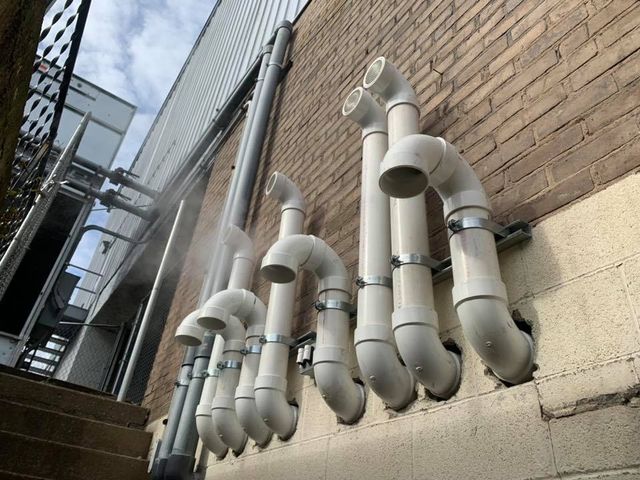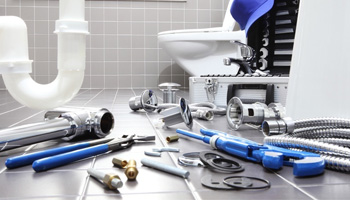What're your insights and beliefs about Plumbing Installation 101: All You Need to Know?

Understanding just how your home's pipes system works is important for every single property owner. From providing tidy water for drinking, cooking, and showering to securely getting rid of wastewater, a well-maintained pipes system is crucial for your household's wellness and convenience. In this detailed overview, we'll explore the complex network that composes your home's pipes and offer suggestions on upkeep, upgrades, and dealing with usual issues.
Introduction
Your home's plumbing system is greater than just a network of pipelines; it's a complicated system that guarantees you have access to clean water and effective wastewater elimination. Recognizing its components and exactly how they work together can help you prevent costly repair services and guarantee every little thing runs efficiently.
Fundamental Components of a Plumbing System
Pipes and Tubing
At the heart of your pipes system are the pipelines and tubes that bring water throughout your home. These can be constructed from numerous products such as copper, PVC, or PEX, each with its benefits in regards to toughness and cost-effectiveness.
Components: Sinks, Toilets, Showers, and so on.
Components like sinks, commodes, showers, and bath tubs are where water is made use of in your house. Understanding how these fixtures connect to the plumbing system aids in detecting troubles and intending upgrades.
Valves and Shut-off Points
Valves control the flow of water in your pipes system. Shut-off shutoffs are crucial during emergencies or when you require to make fixings, permitting you to separate parts of the system without interfering with water flow to the whole residence.
Water System
Key Water Line
The primary water line links your home to the community supply of water or a private well. It's where water enters your home and is distributed to different fixtures.
Water Meter and Stress Regulatory Authority
The water meter steps your water usage, while a stress regulator makes certain that water moves at a risk-free pressure throughout your home's pipes system, stopping damage to pipes and fixtures.
Cold Water vs. Warm water Lines
Comprehending the distinction in between cold water lines, which provide water directly from the major, and warm water lines, which carry warmed water from the hot water heater, helps in fixing and planning for upgrades.
Drainage System
Drain Water Lines and Traps
Drain pipelines bring wastewater away from sinks, showers, and commodes to the drain or septic tank. Traps prevent sewer gases from entering your home and likewise trap particles that could create blockages.
Air flow Pipes
Air flow pipes permit air into the water drainage system, stopping suction that could reduce drain and trigger traps to vacant. Proper air flow is necessary for preserving the stability of your plumbing system.
Relevance of Appropriate Water Drainage
Guaranteeing correct drainage protects against backups and water damages. On a regular basis cleaning drains and maintaining catches can prevent expensive repairs and prolong the life of your pipes system.
Water Heating Unit
Sorts Of Water Heaters
Hot water heater can be tankless or traditional tank-style. Tankless heating units warmth water on demand, while storage tanks save heated water for instant usage.
Upgrading Your Plumbing System
Factors for Updating
Upgrading to water-efficient components or changing old pipes can improve water high quality, lower water bills, and enhance the worth of your home.
Modern Plumbing Technologies and Their Benefits
Check out modern technologies like smart leak detectors, water-saving bathrooms, and energy-efficient hot water heater that can conserve money and decrease ecological influence.
Price Considerations and ROI
Calculate the in advance costs versus long-lasting cost savings when taking into consideration pipes upgrades. Many upgrades pay for themselves with minimized energy bills and fewer repairs.
Exactly How Water Heaters Link to the Plumbing System
Comprehending exactly how hot water heater attach to both the cold water supply and warm water circulation lines helps in diagnosing issues like insufficient hot water or leaks.
Maintenance Tips for Water Heaters
On a regular basis purging your hot water heater to eliminate debris, inspecting the temperature level setups, and evaluating for leakages can prolong its life expectancy and enhance energy effectiveness.
Typical Pipes Problems
Leaks and Their Causes
Leakages can take place as a result of maturing pipelines, loosened fittings, or high water pressure. Addressing leaks without delay protects against water damages and mold development.
Clogs and Blockages
Clogs in drains pipes and bathrooms are frequently caused by flushing non-flushable things or a build-up of grease and hair. Using drainpipe displays and being mindful of what goes down your drains can protect against clogs.
Indications of Plumbing Issues to Expect
Low water stress, slow drains, foul odors, or unusually high water bills are signs of prospective plumbing issues that should be addressed promptly.
Pipes Upkeep Tips
Routine Inspections and Checks
Set up yearly plumbing examinations to catch problems early. Search for signs of leakages, rust, or mineral buildup in taps and showerheads.
DIY Upkeep Tasks
Straightforward tasks like cleansing faucet aerators, checking for bathroom leaks utilizing dye tablet computers, or protecting exposed pipes in chilly climates can prevent major plumbing concerns.
When to Call a Professional Plumber
Know when a pipes issue needs professional proficiency. Trying complex repair services without proper understanding can lead to more damage and higher fixing costs.
Tips for Minimizing Water Usage
Basic behaviors like repairing leaks quickly, taking much shorter showers, and running full tons of washing and recipes can conserve water and reduced your utility expenses.
Eco-Friendly Pipes Options
Take into consideration sustainable plumbing products like bamboo for floor covering, which is durable and environment-friendly, or recycled glass for countertops.
Emergency Preparedness
Actions to Take Throughout a Plumbing Emergency
Know where your shut-off shutoffs are located and how to shut off the supply of water in case of a ruptured pipeline or major leak.
Value of Having Emergency Situation Contacts Useful
Maintain call details for local plumbing professionals or emergency situation solutions readily available for quick action throughout a pipes crisis.
Ecological Impact and Conservation
Water-Saving Fixtures and Home Appliances
Mounting low-flow taps, showerheads, and toilets can considerably reduce water usage without compromising efficiency.
Do It Yourself Emergency Situation Fixes (When Suitable).
Short-lived fixes like utilizing air duct tape to spot a dripping pipeline or putting a container under a leaking faucet can decrease damages till a specialist plumber arrives.
Conclusion.
Understanding the makeup of your home's plumbing system empowers you to maintain it effectively, conserving money and time on fixings. By adhering to normal upkeep regimens and staying informed about modern-day pipes innovations, you can ensure your plumbing system operates successfully for several years to find.
Understanding Your Home Plumbing System: A Comprehensive Guide
Plumbing System: The Lifeline of Your Home
At its core, the plumbing system is designed to perform two primary functions: bring fresh water into your home and remove wastewater. The system is a network of pipes, fixtures, and other components that transport water and sewage. Residential plumbing systems include potable water supply lines, drain-waste-vent (DWV) systems, and various plumbing fixtures that make water use in daily tasks possible.
Key Components:
Water Supply: This part of your plumbing system brings municipal water into your home, passing through the main water supply line. It s responsible for supplying all water needs, from drinking to bathing.
Drainage System: It carries waste and water away from your home to the sewer or septic system. This system includes all the piping within your home that leads to external sewage or septic systems.
Vent System: An essential yet often overlooked component, the vent system allows sewer gases to escape and lets air into the drainpipes, ensuring water and waste move correctly through the system.
Fixture: More Than Just Taps and Toilets
Plumbing fixtures are the most interactive parts of the plumbing system, including faucets, showers, toilets, and sinks. Each fixture is connected to the plumbing system and plays a role in either the delivery of freshwater or the disposal of waste and wastewater.
Types of Fixtures:
Faucets and Sinks: Used for washing hands, dishes, and other daily water needs. Toilets: Dispose of human waste through the sewage system. Bathtubs and Showers: Provide bathing facilities, requiring both hot and cold water supply. Water Supply: The Source of Life
The water supply system is a critical component, ensuring that potable water is available throughout your home for various uses, including drinking, cooking, and cleaning. This system consists of pipes that distribute water to different parts of the house, controlled by valves to regulate the water flow.
Types of Plumbing: Materials and Methods
Various types of plumbing systems and materials are used in residential settings, each with its advantages and applications. From copper and PVC pipes for water supply to cast iron and ABS for drainage, the choice of materials can impact the longevity and efficiency of your plumbing system.
https://intownplumbingtx.com/articles/home-plumbing-system-guide/

I am just very curious about Understanding Your Home's Plumbing Anatomy and I'm hoping you appreciated the entire blog posting. Sharing is nice. One never knows, you will be doing someone a favor. I am grateful for your time. Revisit us soon.
This Resource